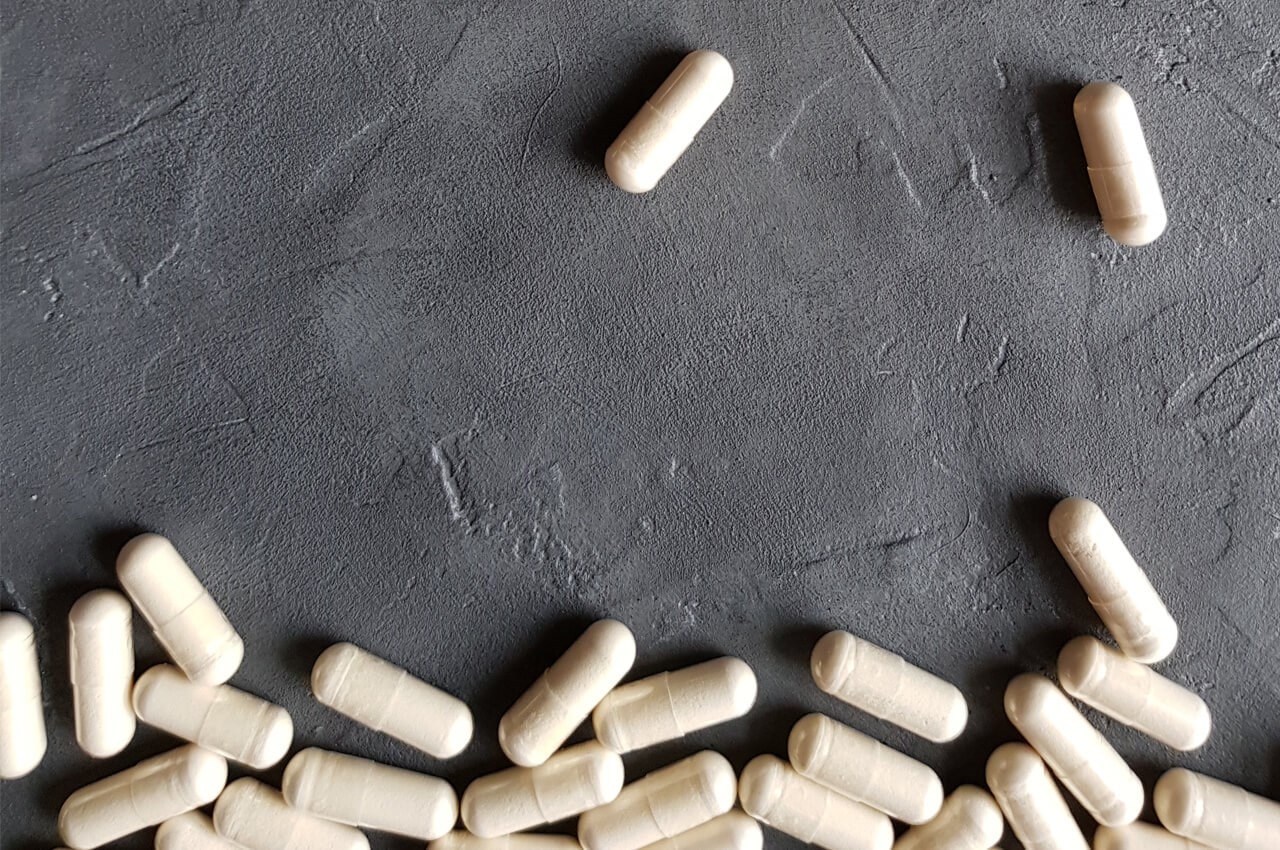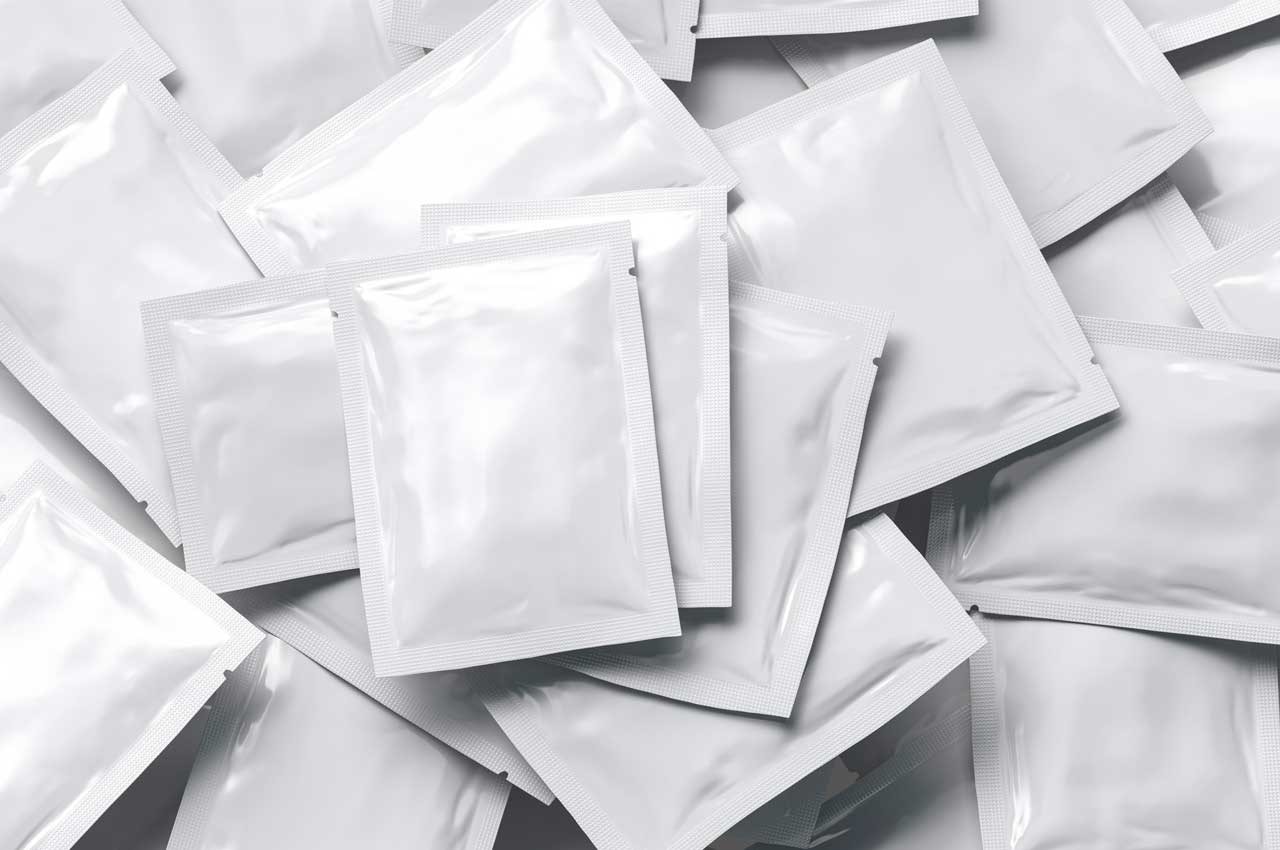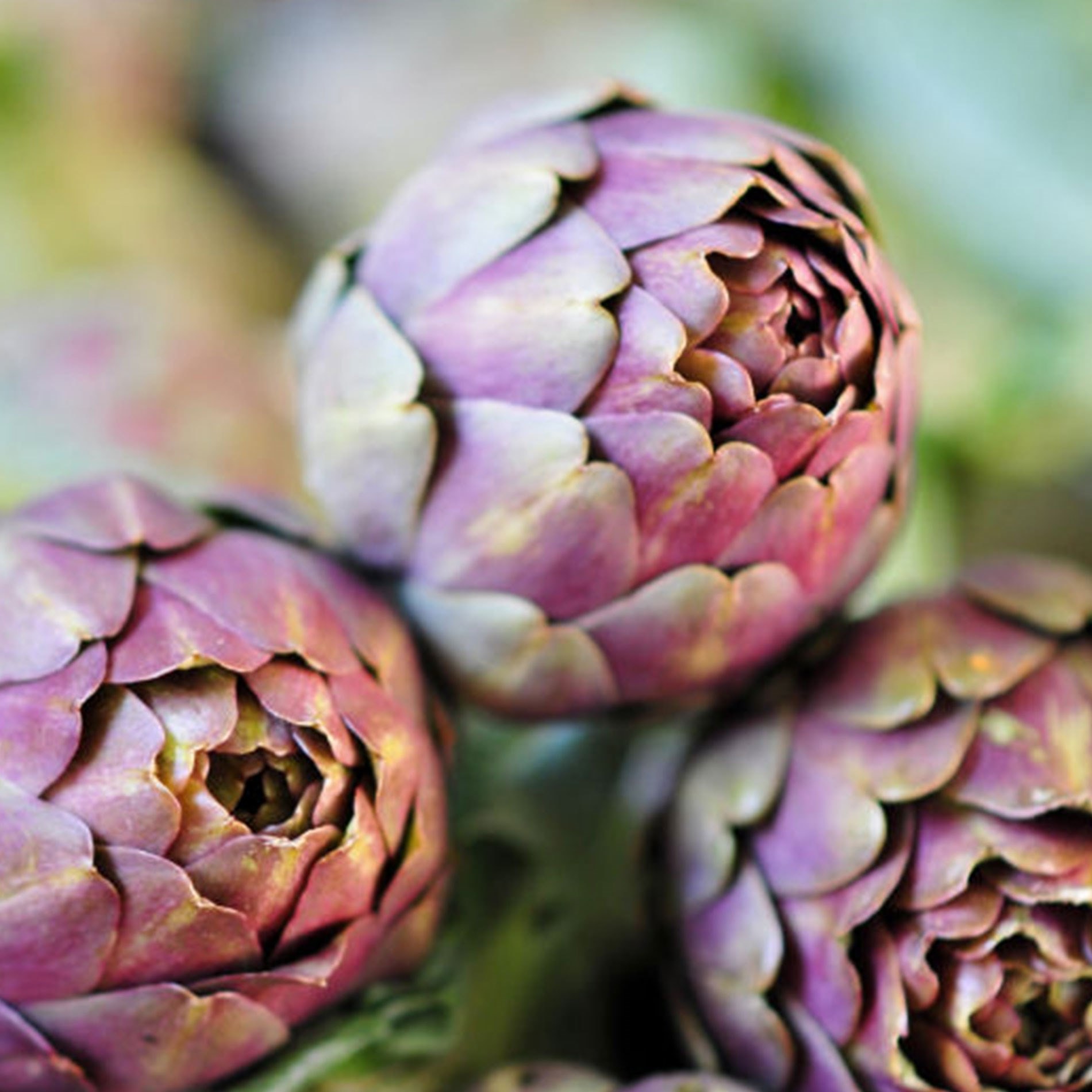What are Prebiotics?
Prebiotics are indigestible natural fibres which are fermented by our good gut bacteria to help them thrive. Read on to find out everything you need to know about prebiotics. In this article we answer all of your questions:
- What are prebiotics?
- Prebiotics vs probiotics
- What are prebiotic foods?
- Which are the best prebiotics?
- How do prebiotics work?
- What are the health benefits of prebiotics?
- Can you take prebiotics and probiotics together?
- Who should not take prebiotics?
- Key takeaways
What are prebiotics?
The official scientific definition of a prebiotic is: 'a substrate that is selectively utilised by host microorganisms conferring a health benefit1’.
But in simple terms, prebiotics are indigestible natural fibres, typically types of carbohydrates. The human body can’t break these fibres down, so they provide little/no calorific value. Whilst we can’t digest them, the beneficial microbes which live in our gut microbiome love to feast on prebiotic fibres. Read this article to find out more about the microbiome.
A prebiotic is a type of complex carbohydrate which cannot be broken down by the human gut. Humans therefore do not derive energy from prebiotics, but our gut bacteria do. Prebiotics selectively stimulate the growth of good (probiotic) bacteria in the body. They can be taken in supplement form, but are also found naturally in many plant foods such as leeks, onions, garlic, bananas, Jerusalem artichokes and others.
Prebiotics v probiotics
One of the questions we’re asked most often is “What is the difference between prebiotics and probiotics?”
Many people get confused about this. To clarify, ‘prebiotics’ are the indigestible carbohydrates that our friendly strains of gut bacteria use as a food source, whereas ‘probiotics’ are the friendly bacteria themselves! Read our article What are probiotics? to learn more about friendly bacteria.
Both probiotic and prebiotic supplements have been linked to healthy digestion, good immunity, improved mental health and increased energy levels (amongst other things). It can therefore be difficult to decide which to take, so later in this article we look at the benefits of each and how to decide which to take to best support your wellbeing. If you’re short on time, then head straight to Can you take prebiotics and probiotics together?
What are prebiotic foods?
Prebiotic fibres are completely natural and are found in many dietary sources, including fruits, vegetables, whole grains, and legumes such as peas and beans. Examples of high-prebiotic foods include:
- Jerusalem artichokes
- Garlic
- Bananas
- Chicory
- Onions
- Leeks
- Peas
- Lentils
- Oats
- Dandelion leaves
Less well-known examples of prebiotic foods include raw, unpasteurised apple cider vinegar, a fermented food containing prebiotics from the apples used to make it. Research is also highlighting a prebiotic role for other nutrients such as polyphenols, antioxidants found in chocolate and berries2, and omega-3 fatty acids found in flaxseeds and oily fish3. It appears they support gut health and the gut microbiome.
Another type of dietary prebiotic is found in human breast milk! Human milk oligosaccharides (HMO’s) have been shown to have extensive health benefits for babies, so much so that some formula milks are now adding them as an ingredient. For babies and infants breast milk is undoubtedly one of the best prebiotics foods with many health benefits. You can find more information on HMO’s in Baby Probiotics.
If you eat a healthy diet containing a broad range of fruits, vegetables, pulses, legumes, and whole grains, then you should be consuming lots of natural prebiotic fibres in your diet. However, although there isn’t an official recommended daily amount for prebiotics, studies suggest that at least 3 to 5 grams of prebiotics a day is required to have a therapeutic effect4. This means you’d have to consume a lot of prebiotic foods in order to achieve an ideal daily intake. This is why many people prefer to take a prebiotic supplement.

Which are the best prebiotics?
It’s hard to say which is the best prebiotic as there are many different types of prebiotic fibres. But when looking for a good prebiotic supplement, you should always choose one containing prebiotics which have been highly researched. The three most recognised and researched types of prebiotics used in supplements are:
- Fructooligosaccharides (FOS)
- Galactooligosaccharides (GOS)
- Inulin (sometimes listed as chicory fibre)
Not all supplements containing prebiotics will be labelled with the word ‘prebiotic’, so it’s good to know which terms to look out for in the ingredients. These prebiotics all meet the scientific criteria and are well known to increase levels of good bacteria, especially Bifidobacteria, in the gut, thus supporting a healthy microbiome.
For more details about FOS and inulin, take a look at this blog: A closer look at FOS and Inulin
There are several other types of non-digestible fibre that are yet to be officially classified as ‘prebiotics’ but you may see them listed in certain supplements. These include: xylooligosaccharides, polydextrose, isomalto-oligosaccharides, gluco-oligosaccharides, malto-oligosaccharides, mannan-oligosaccharides (MOS) and many more.
It’s unusual to find prebiotic capsules as these natural fibres are quite bulky, so they are usually found in powder supplements. They have a naturally sweet taste so can be pleasant to take, and they mix easily into a variety of different foods and drinks. Another benefit of prebiotics is that they are very shelf stable and do not easily degrade over time, making them an excellent addition to a daily health routine.
How do prebiotics work?
What is prebiotic fibre made of? The biochemistry of prebiotics is truly fascinating, as their structure can affect their function – in future this may offer the potential to develop prebiotics for specific health conditions or functions. FOS, GOS and inulin are all types of carbs made up of linked chains of sugars, but are structurally and chemically different. What’s more, there are different types of FOS, GOS and inulins. It depends how the prebiotic was made or which source they were isolated from. This can affect where in the gut they are broken down, and by which gut microbes, ultimately affecting their overall function.
When prebiotics are fermented (i.e. broken down) by our gut bacteria, the bacteria are able to produce short chain fatty acids (SCFA’s) as a by-product. The most common SCFA’s produced are acetate, butyrate and propionate, which support a healthy gut environment and have positive systemic benefits as well. Butyrate typically attracts the most attention due its extensive benefits for gut health. It can stimulate our gut cells helping to promote regular bowel movements and supports a healthy gut lining ensuring proper digestion and absorption of nutrients.
By providing our ‘friendly bacteria’ colonies with prebiotics, they are in return able to support our health through the provision of these beneficial SCFA’s.
The gut is a huge complex ecosystem, with thousands of microbes competing for space and nutrients and interacting with one another. People often wonder whether prebiotics also feed harmful bacteria in the gut, but for a microbe to break down a prebiotic, they must contain specific enzymes. Most harmful microbes do not harbour these enzymes and thus cannot break down the prebiotic. You can read more about this subject in this article does FOS feed bad bacteria too?

What are the health benefits of prebiotics?
We are reassured that prebiotics help to support our good gut bacteria, but what else do prebiotics do? One of the most common benefits is that prebiotics make you poop! As mentioned, this is due to the positive effects of SCFAs stimulating the gut to improve regularity. But prebiotics benefits extend to more than just SCFA production. In fact, prebiotics have been positively associated with improvements in the following health conditions:
- Gut health5
- Constipation6
- Immunity7
- Sleep8
- Autism9
- Metabolic health10
- Mineral absorption11
- Skin health12,13
- Satiety14
- Weight loss15
There has been much interest in prebiotics for weight loss, and several scientific studies have yielded promising results. One such study15 involved 42 overweight and obese children. They were given either prebiotic fibre (inulin) or placebo once a day for 16 weeks. The prebiotic group of children gained less weight in the 4-month intervention period, than those in the placebo group.
Healthcare professionals can find out more about the mechanisms of actions and clinical trials looking at each health area in Dr Aisling’s blog on the Probiotic Professionals site: The uses of prebiotics.
Unfortunately, today’s typical ‘Western-style’ diet is quite lacking in the types of healthy foods that contain prebiotics, so people are not getting the levels that they need to maintain good gut health. Plus, harsh cooking methods can damage the prebiotic structures and reduce our intake still further. As previously mentioned, even if you do eat a varied diet full of natural prebiotic sources, you’d need to consume large quantities to obtain an optimum amount each day.
This is why some individuals may prefer to take a prebiotic supplement to ensure they are getting a good intake of these healthy fibres each day. This can also be an easier option for fussier eaters, or those who do not enjoy vegetables, though supplements should not be used to replace a healthy diet. Prebiotics may be found in a supplement on their own, or in combination with probiotics (often called synbiotics).
Can you take prebiotics and probiotics together?
People also ask whether you can take prebiotics and probiotics at the same time. It’s actually fine to mix and match prebiotics and probiotics according to your needs and requirements. Some people like supplements which contain both, other people prefer to take one or the other.
The benefit of taking prebiotics with probiotics is that you are nurturing the gut microbiome in two different ways at the same time. This dual pronged approach both directly replenishes the body's good bacteria, whilst also feeding them and encouraging further growth. In simple terms it is like sowing new seeds in the garden, along with fertilising the soil to feed them and keep them flourishing for longer.
However, as with most things in life, there is never a one size fits all scenario. Some people may find that certain types of prebiotics work better for them than probiotics, or a combination of the two. Those that are lucky enough not to have any particular gut health symptoms that they are trying to overcome, may find that gently supporting their existing microbiome with a prebiotic alone works well for them.
Additionally, certain conditions have been shown to respond well to prebiotics. Constipation is a good example here, and many people find that taking a prebiotic powder such as inulin or FOS may support bowel regularity. However, many strains of probiotic also have good clinical data supporting them for this use, so it does sometimes come down to trying different products and combinations to see which works best for you.
When considering a prebiotic supplement, do bear in mind though that everyone has a different bacterial make-up, and therefore different types of prebiotics and probiotics (or combinations of both) will work for different people. Whilst one person may feel better on prebiotics and find they help to relieve occasional bloating, another may find discomfort, and believe them to casue bloating.
As already mentioned, whilst prebiotics are known to have a very positive effect on Bifidobacteria, there is less research to evidence their feeding other types of bood bacteria such as Lactobacilli strains, and therefore it may be beneficial to top up one's levels of beneficial bacteria as well as taking prebiotics.
Who should not take prebiotics?
People sometimes have concerns about taking prebiotics. They may worry whether prebiotics are harmful, if it’s OK to take prebiotics every day, or if you can take too many prebiotics.
These concerns have arisen largely because some people can initially notice digestive effects when taking prebiotic supplements, or indeed when eating foods, such as pulses or artichokes, which contain natural prebiotics. A small minority of people find that they do not agree with their system. For those with an overly sensitive gut, prebiotic fibres can cause gas & bloating at first (although this usually subsides after just a few days). This is not generally anything to be worried about, but it may be uncomfortable and put some people off.
Not everyone will experience these effects, and even in those who do experience minor discomfort, bloating or wind, studies show that these effects settle down in a few days16. In fact, flatulence can indicate that good gut bacteria populations are being stimulated, and the many potential benefits of taking prebiotics should be worth any initial discomfort you may experience initially. If you’re particularly sensitive, then taking a small amount initially then gradually building up can be helpful.
Prebiotics are completely natural and widely available in our diet. There are not many individuals for whom prebiotics would be inappropriate, but if you have a serious health condition you should always consult a doctor before taking any natural supplement.
Some people do find they’re particularly sensitive to the effects of certain prebiotics, in a similar way that we may be with certain foods. If you want to try prebiotics but you tend to be very sensitive to foods and supplements, then speak to your doctor or a qualified nutrition professional for advice.
Individuals following a low FODMAP diet may in fact need to avoid prebiotics either in their diet or in supplement form, particularly whilst they are in the initial strictest phase of the diet. The ‘O’ in FODMAP stands for oligosaccharides, which need to be avoided on this diet, and most commercially available prebiotic supplements contain either fructo- or galacto-oligosaccharides (FOS or GOS). Prebiotics can usually be phased back into the diet once the ‘maintenance’ and ‘reintroduction’ phases are reached. FODMAP diets should always be followed with professional advice and support.
You can read more about the FODMAP diet here: Natural remedies for IBS.
One benefit of taking probiotics as opposed to prebiotics is that they provide a more ‘targeted’ approach. High quality probiotic supplements will state the exact genus, species and strain of probiotic bacteria that they contain. Equipped with this level of information, it is possible to select the probiotic product that is right for your health symptoms, based on the research behind each strain. Read more about the importance of different probiotic strains.
Taking a prebiotic could be viewed as a much broader approach to gut health, as they simply support and sustain any probiotics already in the system. Going back to our flower analogy, this would be like feeding the soil with fertiliser, without necessarily having sown new seeds first. Existing plants will surely flourish, but you are not introducing new species for diversity.
Key takeaways
Prebiotics can make a really nice addition to a daily health routine, and support the composition of the microbiome and overall health of many people.
- The approved definition of a prebiotic is: ‘a substrate that is selectively utilised by host microorganisms conferring a health benefit’
- Prebiotics encourage the growth of good bacteria in the gut
- Prebiotic fibres can support our gut and overall health
- Prebiotics are found naturally in some foods
- Prebiotic supplements can be taken with or without probiotics to supplement daily intake
- FOS, GOS and Inulin are the most recognised and researched prebiotics
Prebiotic research is booming, with new studies coming out on a regular basis highlighting their many benefits and modes of actions. The potential of prebiotics is exciting and one to keep an eye on!
If you enjoyed reading about this subject, then take a look at these related articles:
Gut health and sleep on the BBC
Health professionals can visit the Professionals site to read the following articles:
Could prebiotics help with anxiety?
Could prebiotics help to tackle obesity?
References
- Gibson G et al., "Expert consensus document: The International Scientific Association for Probiotics and Prebiotics (ISAPP) consensus statement on the definition and scope of prebiotics," Nature Reviews Gastroenterology & Hepatology , vol. 14, p. 491–502, 2017.
- Hayek N. (2013). Chocolate, gut microbiota, and human health. Frontiers in pharmacology, 4, 11. https://doi.org/10.3389/fphar.2013.00011
- Amrita Vijay, Stuart Astbury, Caroline Le Roy, Tim D Spector & Ana M Valdes (2021) The prebiotic effects of omega-3 fatty acid supplementation: A six-week randomised intervention trial, Gut Microbes, 13:1, DOI:
- Roberfroid, M. et al. Prebiotic effects: metabolic and health benefits. Br. J. Nutr. 104 (Suppl. 2), S1–S63 (2010).
- Sanders M et al., "Probiotics and prebiotics in intestinal health and disease: from biology to the clinic," Nature Reviews Gastroenterology & Hepatology volume , vol. 16, pp. 605-616, 2019.
- Collado Yurrita L et al., "Effectiveness of inulin intake on indicators of chronic constipation; a meta-analysis of controlled randomized clinical trials," Nutr. Hosp, vol. 30, pp. 244-252, 2014.
- Vulevic J et al., "Influence of galacto-oligosaccharide mixture (B-GOS) on gut microbiota, immune parameters and metabonomics in elderly persons," British Journal of Nutrition, vol. 114, pp. 586-595, 2015.
- Thomson R et al., "Dietary prebiotics and bioactive milk fractions improve NREM sleep, enhance REM sleep rebound and attenuate the stress-induced decrease in diurnal temperature and gut microbial alpha diversity.," Front Behav Neurosci, vol. 10, p. https://doi.org/10.3389/fnbeh.2016.00240, 2017 .
- Grimaldi R et al., "A prebiotic intervention study in children with autism spectrum disorders (ASDs)," Microbiome, vol. 6, p. 133, 2018 .
- Beserra B et al., " systematic review and meta-analysis of the prebiotics and synbiotics effects on glycaemia, insulin concentrations and lipid parameters in adult patients with overweight or obesity.," Clinical Nutrition, vol. 34, pp. 845-858, 2015.
- Abrams S et al., "Young adolescents who respond to an inulin-type fructan substantially increase total absorbed calcium and daily calcium accretion to the skeleton," Journal of Nutrition, vol. 137, pp. 2524-2526, 2007.
- Lolou et al., "Functional Role of Probiotics and Prebiotics on Skin Health and Disease," Fermentation, vol. 5, no. 2, p. https://doi.org/10.3390/fermentation5020041, 2019.
- Salem I et al., "The Gut Microbiome as a Major Regulator of the Gut-Skin Axis," Front Microl, p. 9: 1459, 2018.
- Kellow N et al., "Metabolic benefits of dietary prebiotics in human subjects: a systematic review of randomised controlled trials," British Journal of Nutrition, vol. 111, pp. 1147-1161, 2014.
- Reimer A et al., Prebiotics reduce body fat in overweight children. American Gastroenterological Association, 2017.
- Mego M, Accarino A, Tzortzis G, Vulevic J, Gibson G, Guarner F, Azpiroz F. Colonic gas homeostasis: Mechanisms of adaptation following HOST-G904 galactooligosaccharide use in humans. Neurogastroenterol Motil. 2017 Sep;29(9). doi: 10.1111/nmo.13080. Epub 2017 Apr 18. PMID: 28418214.
- Mikulic N et al., (2024) Prebiotics increase iron absorption and reduce the adverse effects of iron on the gut microbiome and inflammation: a randomized controlled trial using iron stable isotopes in Kenyan infants, The American Journal of Clinical Nutrition, Volume 119, Issue 2, 456-469.
Popular Articles
View all Prebiotics articles-
Probiotics27 Feb 2025
-
Prebiotics19 Jul 2023
-
Prebiotics13 Mar 2024


